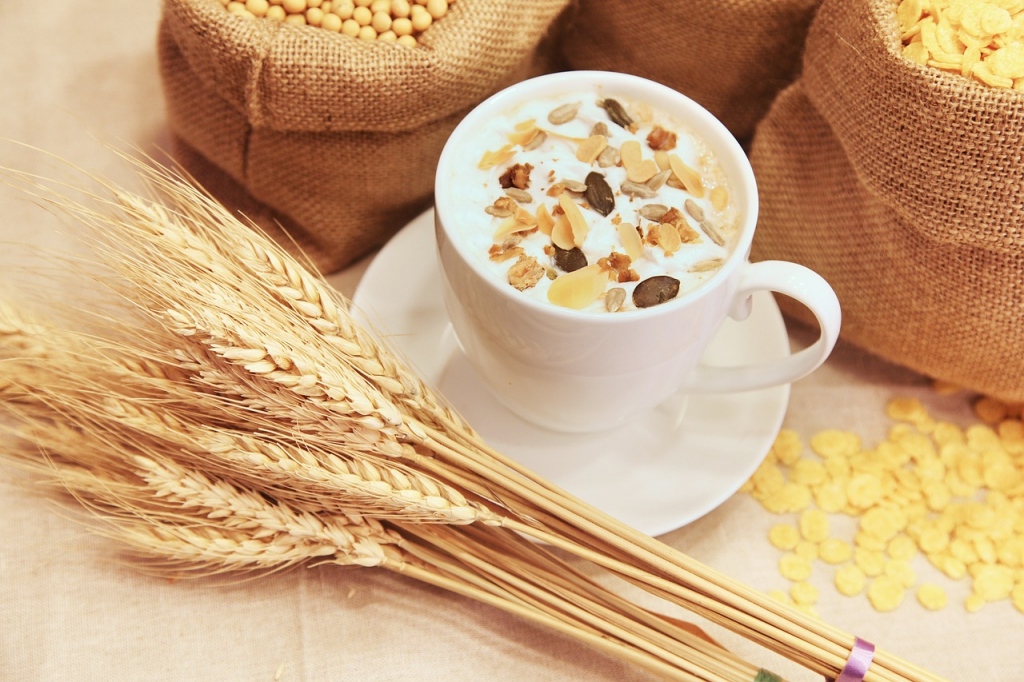Everyone knows that carbs are not good for your health and that they’re one of the main culprits behind those extra inches around our waists. Because of that, people tend to avoid bread, pasta, and foods high in sugar. Unfortunately, while the reasoning is generally good, it also means that some people avoid all kinds of grains as well, which is a mistake since only white flour is actually bad for us.
Now, the difference between white flour and whole grain foods is in the completeness of the grains used in production. White flour only uses the endosperm – the starchy part of the grain. Whole grain foods use all three parts – the endosperm, the bran, and the germ.
Whole grains are actually a very important part of a healthy diet. They are a great source of iron, selenium, fiber, B vitamin, and many other useful substances. Regular consumption of whole grain foods can help reduce the risk of obesity, heart disease, stroke, type 2 diabetes, and several types of cancer, among others. So if you don’t normally include whole grains in your diet, it may be the time to start. Here are some of the most beneficial whole grains to incorporate into your eating habits.
1. Whole oats
Oats are one of the healthiest foods you can eat. They are packed with vitamins and minerals, and they are a rich source of antioxidants. Not only are they filled with plenty of useful nutrients, but they also contain more protein than other grains and they have a higher amount of fat as well. An additional benefit comes in the form of avenanthramides, a group of antioxidants that can significantly help with conditions related to heart and blood vessels. This helpful molecule is naturally found in a very limited number of foods, and oats are one of those few. All these combined means that oats are probably the most nutritious food available. However, try to steer clear of the instant oatmeal, which is usually full of sugar and/or corn syrup.
2. Whole Wheat
Wheat has a bit of a bad reputation because of its high gluten content. Even though this particular type of protein can harm people with low tolerance, it is harmless for the vast majority of us. If you do not belong to the unlucky minority, there is no reason to avoid whole wheat. On the contrary, it’s a great source of plenty of nutrients. The fact that it is always in great demand with grain buyers in Australia, for example, is proof enough of its usefulness and popularity. However, make sure to always buy products made with whole wheat, since “regular” wheat is made only with the endosperm and thus robbed of all its nutrients.
3. Brown rice
Brown rice is healthier than the regular because it still contains the bran and the germ. Since all the nutrients are actually in that part of the grain, it makes sense that brown rice is the wiser option. Other than its nutritive worth, brown rice helps reduce the risk of diabetes and helps with weight control.
4. Buckwheat
Excellent for those suffering from celiac disease, buckwheat is one of the unjustly neglected foods. Even though it is technically a seed, we use it as a grain, so we also classify it as one when it comes to dietary habits. It’s gluten-free, easy to prepare, and can be really tasty, so go for it!
5. Whole barley
Whole barley, also called hulled barley, is another not-so-popular grain. On the bright side, it’s rising in popularity because it’s high in fiber, B vitamins, selenium, iron, zinc, potassium, magnesium, and other important nutrients. It helps with regulating blood pressure and preventing many conditions, including heart disease and bone-related issues.
6. Popcorn
Here’s a fun one – popcorn is great for your health! It’s not just a delicious snack; it’s also a whole-grain food. It’s packed with nutrients, and it’s an incredible source of fiber. Unfortunately, the commercial microwave packages are not really healthy. They are prepared with plenty of harmful ingredients, such as unhealthy fat, sugar, artificial flavors, and too much salt. Therefore, while it is definitely recommended to eat popcorn, it’s best if you prepare it yourself. That way, you’ll know exactly what you’re eating, you’ll reap all the health benefits, and it’ll still be tasty!
Whole grains are an incredibly healthy addition to your diet. Most of them are very versatile and easy to use. What’s more, they can also be very tasty, so there’s no reason to postpone introducing them into your everyday life.
